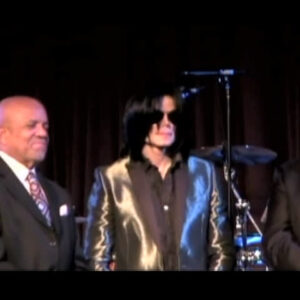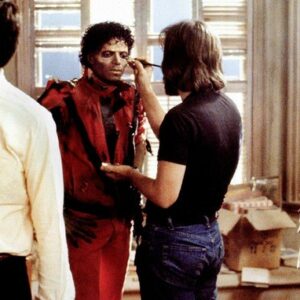Aretha Franklin, often hailed as the “Queen of Soul,” captivated the world with her voice—a powerful, emotive instrument that resonated across generations. But beyond her unparalleled vocal talent, Franklin made waves in another realm: fashion. Her bold, daring, and evolving sense of style was a reflection of her personal journey, cultural identity, and the era in which she lived. Throughout her career, Aretha Franklin’s fashion transcended aesthetics; it became a symbol of empowerment, political expression, and creative liberation. In this article, we’ll explore how her fashion choices evolved over the decades, their cultural significance, and how they continue to influence the fashion world today.
The Evolution of Aretha Franklin’s Style
Aretha Franklin’s journey through the world of fashion began in the early 1960s when she first entered the public eye as a young, promising artist. Her style at the time was elegant, polished, and in many ways, reflective of the traditional standards of beauty for African American women during that era. Think sophisticated evening gowns, tailored dresses, and gloves—a look that was both timeless and reserved.
However, as her voice gained strength and her message became more powerful, so too did her style. By the late 1960s and early 1970s, Franklin had evolved into a bolder version of herself. She embraced the aesthetic of the civil rights movement and the rise of Black pride. Aretha began to favor more extravagant and colorful pieces, celebrating her individuality through clothes that were statement-making in both design and spirit. The gowns became more elaborate, the prints more daring, and the silhouettes more regal. Fur coats, bold prints, and luxurious fabrics became her signature, reflecting both her success as a performer and her unapologetic pride in her identity as a Black woman.
In the 1980s and beyond, Aretha’s style leaned into opulence. She began incorporating a variety of textures, from sequins to satin, and embraced larger-than-life accessories. Her fashion choices often paralleled her musical performances: bold, grandiose, and filled with passion. Throughout her career, her style reflected not only the changing trends of the times but also her personal evolution—from an up-and-coming singer to an indomitable force in both the music and fashion industries.
Aretha’s Signature Pieces
Aretha Franklin’s wardrobe was filled with iconic pieces that would become synonymous with her larger-than-life persona. One of the most memorable of these was her elaborate collection of fur coats. Whether performing on stage or attending prestigious events, Aretha’s fur coats were a symbol of her success, her wealth, and her regal presence. Her love for fur was so well-known that it became an extension of her image, representing the unapologetic luxury she embraced.
Another iconic element of her style was her dazzling, glittering gowns. Franklin was known for wearing show-stopping gowns adorned with sequins, beads, and intricate designs that caught the light with every move. These gowns were often custom-made, emphasizing her figure and exuding confidence and grace. They were not just performance attire; they were declarations of her dominance as a performer and her sense of self-worth.
And then there were her regal capes. Aretha’s capes were often worn as she entered the stage, draped over her shoulders like the queen she was. These capes were not just decorative—they carried meaning. They symbolized power, authority, and the respect she commanded as a performer. When Aretha removed her cape mid-performance, it felt as though she was shedding one layer of her power, ready to unleash even more through her voice.
Each of these pieces—fur coats, glittering gowns, and capes—became more than just articles of clothing. They were Aretha Franklin’s signature, embodying her identity and the fierce confidence she brought to both her personal life and career.
Fashion as a Form of Empowerment
For Aretha Franklin, fashion wasn’t just about looking good—it was about making a statement. Throughout her career, Franklin used her clothing as a tool of empowerment, particularly during times when African American women were fighting for visibility, respect, and equality. The civil rights movement of the 1960s was a time of great upheaval, and Franklin’s fashion choices often reflected the strength, resilience, and pride of Black women.
Take, for example, the performances and events where Aretha wore her most regal outfits. These ensembles were not just glamorous; they were acts of defiance. In a world where African American women were often marginalized, Franklin used her style to reclaim her space. Her bold prints, luxurious fabrics, and extravagant furs communicated a message: she was not to be ignored, minimized, or underestimated. Aretha’s fashion choices told the world that she knew her worth, and she demanded respect.
Her sartorial statements extended beyond aesthetics and into politics. During significant events tied to the civil rights movement, Franklin often donned pieces that aligned with the Black pride movement. Her natural hair, adorned with crowns or left to flow free, became a symbol of cultural pride. She embraced African-inspired prints and bold colors that celebrated her heritage and aligned her with the fight for racial equality. Through her fashion, Franklin showed that she was more than just an entertainer; she was a voice for social change, a figure of strength and dignity for her community.
Aretha’s Influence on Modern Fashion
Aretha Franklin’s influence on fashion has left an indelible mark on today’s artists and designers. From the red carpet to stage performances, elements of her iconic style can be seen in many of the bold fashion choices we witness today. Contemporary artists such as Beyoncé, Lizzo, and Rihanna have all drawn inspiration from Franklin’s unapologetic love for luxury, dramatic gowns, and over-the-top accessories.
The resurgence of fur coats, elaborate capes, and glittering gowns in modern fashion can be directly traced back to Franklin’s wardrobe. Designers like Michael Kors and Marc Jacobs have cited her as a source of inspiration, especially in their collections that celebrate boldness and individuality. Aretha’s ability to blend glamour with power has made her a timeless muse for both high fashion and street style.
More than just the clothes, Aretha Franklin’s influence can be seen in the way today’s female artists use fashion to express themselves. Franklin paved the way for women to embrace their curves, to wear what makes them feel powerful, and to never apologize for taking up space. Her legacy continues to inspire not only fashion choices but also the confidence and self-expression behind those choices.
Her Final Statement
Even in her passing, Aretha Franklin made a final, unforgettable fashion statement. At her funeral, the Queen of Soul was dressed in a vibrant red gown with matching heels—an outfit that encapsulated her life’s work, her personality, and her status as a fashion icon. The boldness of the red, a color often associated with power, passion, and strength, was the perfect send-off for a woman who had spent her life defying expectations and standing tall in her truth.
This final look was more than just a tribute to her status as a fashion icon; it was a reminder of who Aretha Franklin was at her core—bold, unapologetic, and regal. The red gown and heels served as a lasting symbol of her influence, not only in music and fashion but also in the cultural landscape of America. Even in death, Franklin’s fashion made a statement of confidence, beauty, and power.
Conclusion
Aretha Franklin was more than just the Queen of Soul—she was a fashion revolutionary. Her style was a reflection of her journey, her politics, and her sense of self. Through fur coats, glittering gowns, and regal capes, Franklin crafted a visual narrative that ran parallel to her musical one. Her fashion was a tool of empowerment, a way to communicate strength and confidence in a world that often sought to silence her.
Her influence on fashion continues to resonate today, inspiring artists, designers, and anyone who dares to be bold. Aretha Franklin’s style was not just about clothes—it was about self-expression, power, and pride. As future generations look to her for inspiration, both in music and fashion, her legacy will remain a beacon of what it means to truly own your identity. Aretha Franklin’s fashion will forever be remembered as an essential part of her legacy, as timeless and influential as her music itself.





